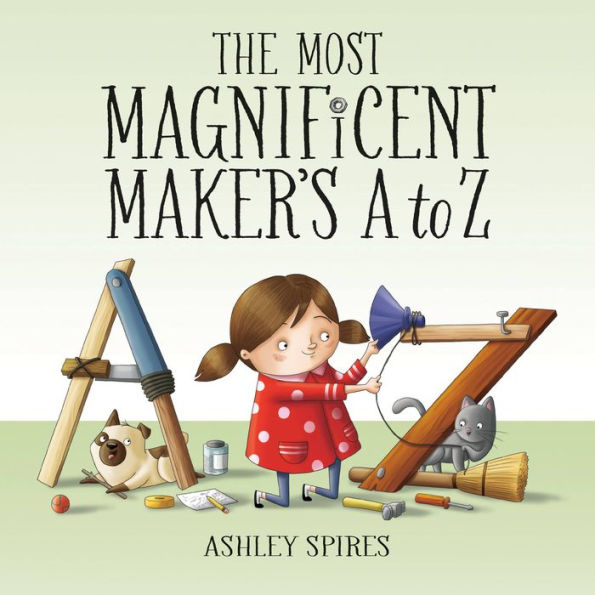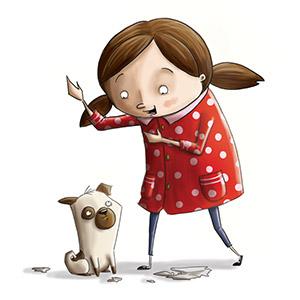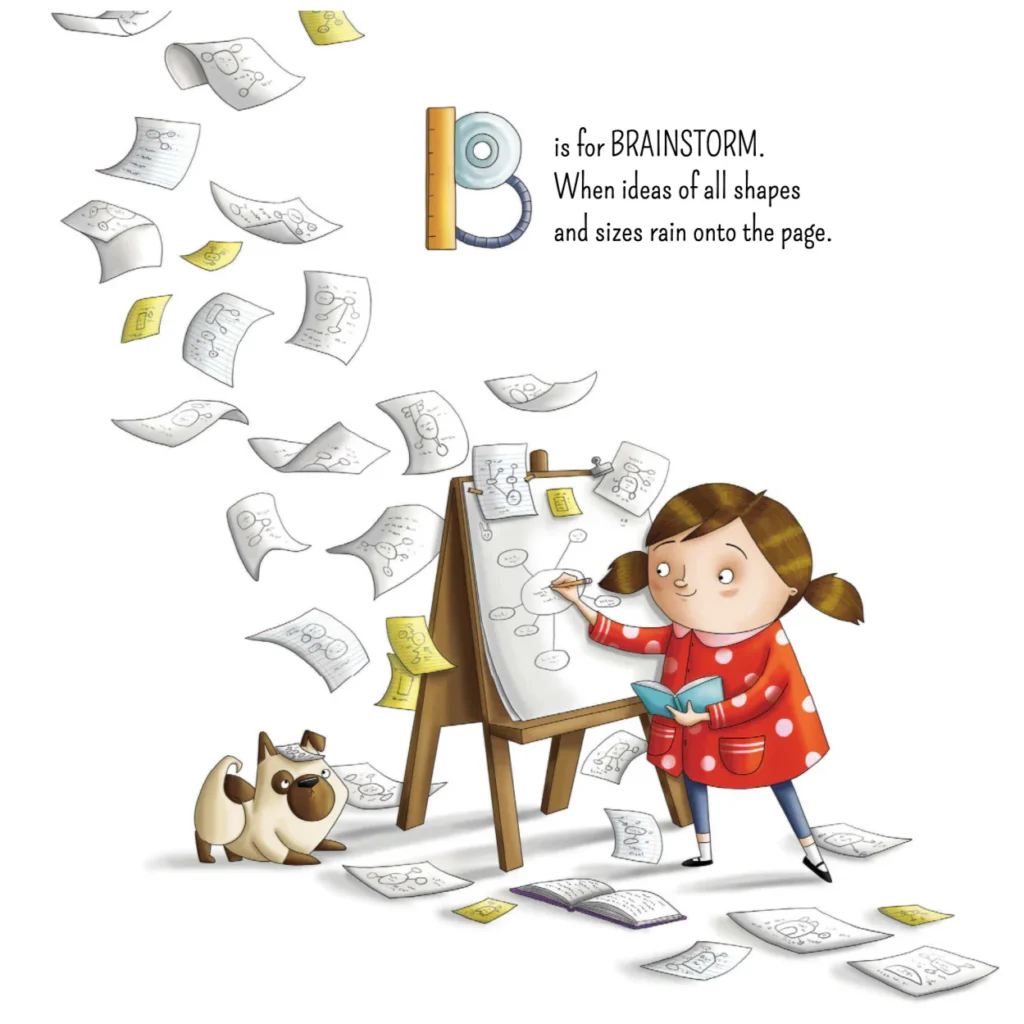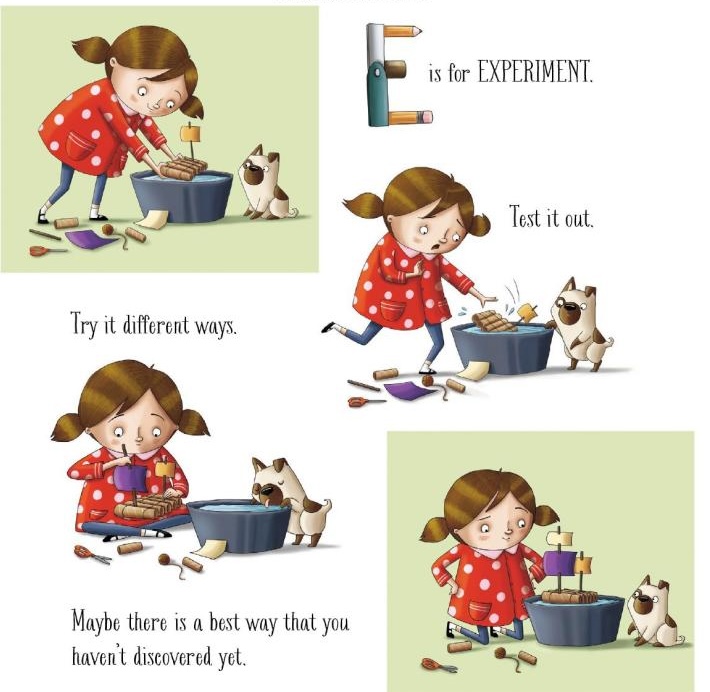Engineering Adventures for "Magnificent Makers"
“Will you read this first?” Rowan pleads as she moves The Most Magnificent Maker's A to Z to the top of the pile of books that the children have chosen for their morning story time session. "It's my favorite."
I love that book," agrees Josephine. "Her dog always helps her."
“She reminds me of us,” Liam adds with a smile and a yawn.
On this gray and blustery winter morning, the children are perfectly happy to snuggle under blankets and follow along as the book's characters engage in a series of engineering adventures.

The Most Magnificent Maker's A to Z is the third book in the Magnificent Makers series created by award-winning author-illustrator Ashley Spires. It quickly joined The Most Magnificent Idea and The Most Magnificent Thing as a favorite read in our early childhood classroom.
With its relatable characters and focus on the importance of creativity, this witty and informative picture book helps foster a growth mindset, showing early learners that anyone can be an inventor or creator. It also introduces young children to the vocabulary they need to navigate the "making" process.
If you're not already acquainted with this process, it's a play-based, hands-on approach to learning that involves brainstorming ideas, solving problems, and coming up with innovative solutions while using a wide variety of tools and materials to "make things."

Even if you're not a fan of alphabet books, you'll quickly realize that this book is different because it's not really about the alphabet. It's about play, creativity, collaboration, and investigation.
The characters that the children in my early childhood classroom have come to love—an imaginative girl and her loyal dog—guide readers through the challenges and triumphs of the creative process.
Each letter offers a simple, kid-friendly definition of an important concept, making this a perfect tool for introducing young children to early engineering activities.
The book captures the excitement and challenges that all problem-solvers and innovators encounter with easy-to-understand explanations of key "maker" concepts such as brainstorming, creativity, problem-solving, collaboration, and persistence.

I’m fairly certain that Rowan, Josephine, Liam, and the rest of the children in the classroom don't realize that they're enjoying an alphabet book this morning. I doubt that they even notice that the letters of the alphabet are formed from tools used in the "making" process.
Instead, they are fully engaged in the story itself: the girl’s creative process, the dog’s supportive role, and the imaginative adventures that they embark on together.
That’s exactly what makes this book so powerful for young learners: It meets children where they are, draws them in with a story, and sparks their creativity in ways that help lay the foundation for future learning.

The story inspires young children to explore their own creativity with its message that anyone can be a maker. Whether it's through simple arts and crafts projects or more complex engineering endeavors, the book encourages children to experiment and think outside the box. It’s a perfect way to motivate young children and emphasize the value of brainstorming ideas to solve problems and learning from mistakes.
It also introduces engineering principles and basic concepts such as structures, materials, and tools. Through fun examples and easy-to-understand language, children are gently introduced to the idea that engineers think critically about how to make things work, using the right materials and tools for the job.
These simple, clear explanations give children a sneak peek into the world of engineering, encouraging them to think about how things work and the steps that lead to a successful invention or innovation.

As the characters in the book encounter design challenges along the way, problem-solving becomes a key theme, subtly integrated into the whimsical illustrations.
Children can see that trial and error is part of the creative process and that persistence is a key to innovation. In one of my favorite parts of the book, the characters face a series of setbacks but persevere until they succeed.
“Mistakes . . . they happen . . . a lot,” the author reminds us, reinforcing the idea that trial and error are part of the process. The author encourages young innovators to “Try, try, try . . . and try again” with the message that, even if something doesn’t work the first time, the process of trying and adjusting is what leads to success.
The book's underlying message—that failure is not something to be avoided, but a necessary step in the engineering design process—offers a vital lesson for young learners that will serve them well in a wide variety of endeavors, from engineering to life.

Ready to turn your own early childhood classroom into a "mini makerspace"?
Check out our engineering lesson plan—Building a Boat—and inspire the early learners of today to become the innovators and problem-solvers of tomorrow!